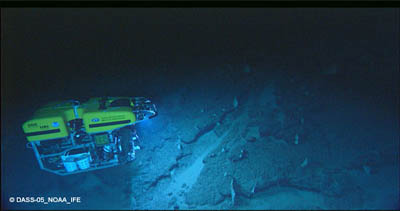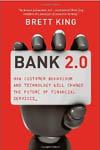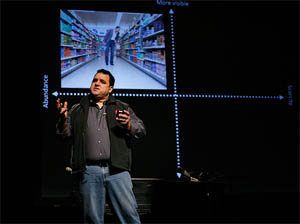
Welcome to the Club of Amsterdam Journal.
John Grüter: “In 2008, the unthinkable happened. Lehman Brothers went bankrupt. Banks had to seek shelter with governments. In 2010, the unthinkable happened again. Local European economies were based on bubbles. Greece, Spain, Portugal, Ireland. What or who can we trust?
The financial infrastructure is intrinsically based on trust, between clients, financial institutions and governments. No trust, no financial infrastructure. Bail out by governments, the World Bank, the IMF, but can we still trust them to do so?
Perhaps we should think differently. Perhaps we should look for ways to boost robustness of the financial infrastructure. Increase transparency. Take away the need for intervention. Infuse loyalty into clients. How to seduce them? Products and services differentiation, mutual value. Client-side risk management. Interaction based on relationship, not (simple) products.
So, what will future financial products and services look like? Will they be more transparent? Will they allow clients to accurately manage risk? Will they return serious value for the relationship? Will competition between financial institutions force a long-term relationship focus?”
…. and join us at the event about
the future of Financial Infrastructure – Thursday, 20 January!
Felix Bopp, editor-in-chief
Euro Money Market Study

Euro Money Market Study
by the European Central Bank
December 2010
EXECUTIVE SUMMARY
This eighth study on the structure and functioning of the euro money market is the result of a survey conducted by the European Central Bank (ECB) and the national central banks that are members of the European System of Central Banks (ESCB). The survey asked panel banks to indicate their average daily turnover in various money market instruments during the second quarter of 2010 and 2009 and to answer a number of qualitative questions. Two features are new to this study which did not feature in the previous ones: the coverage of the survey was extended from 169 to 172 counterparties and additional procedures were put in place to enhance the quality of the data and to better assess the impact of the financial market turbulence, that began in 2007, on the euro money market.
The main findings of the study suggest that the financial market turbulence and the sovereign crisis that hit Europe in the second quarter of 2010 had an important impact on the euro money market.
Aggregate turnover for all instruments decreased in the second quarter of 2010 by 3%. Volumes declined for the third consecutive year, albeit at a slower pace. The largest declines in turnover were observed in the unsecured market and in the overnight index swaps (OIS) segments (18% and 19% respectively). The contraction in the unsecured market was influenced by credit risk concerns and, in the second instance, by the large participation in the ECB’s 1-year long-term refinancing operations in June, September and December 2009 that provided a gross EUR 614 billion to the market and which remained outstanding over the period of analysis covered by the survey. The steep decline in the OIS segment is partly the result of lower volatility in short-term interest rates following the increase in surplus liquidity conditions in the interbank market, and similar declines were also observed in other interest rate derivative segments.
In contrast, the secured market segment (also referred to as “repo” in this study) increased by 8%, positively influenced by the higher share of transactions concluded through a central counterparty (CCP). The CCP share rose from 41% of all repo transactions reported in 2009 to 45% in 2010. The main reason behind the growing importance of CCP is
counterparties’ interest in protecting themselves from rising credit-risk concerns and the greater use of electronic platforms for trading repos
via CCPs.
As regards the derivative segments covered by the study, there was a general decline. Apart from the above-mentioned OIS segment, turnover in forward rate agreements (FRA) decreased by 10%, in other interest rate swaps (other IRS), excluding OIS, by 11% and in cross currency (Xccy) swaps by 4%. The only exception to this trend was that of foreign exchange (FX) swaps, whose turnover increased by 3%, as this segment benefited from an increased demand from European banks from outside the euro area.
Turnover in short-term securities also registered an important increase, growing by 67% in the second quarter of 2010 mainly as a result of a growing volume of transactions in securities issued by credit institutions.
Concentration on short-term maturities remained very strong, in particular in the unsecured, secured and FX swaps segments. The shortening of the maturities traded in the unsecured and secured segments in particular has been a feature of the market since the outbreak of the financial turmoil, as the greater weight attached by banks to counterparty credit risk led them to reduce their longer-term exposures.
As regards the perception of market conditions, the respondents to this year’s survey assessed market liquidity to have deteriorated in the unsecured market and worsened significantly in Xccy swaps segments. Conditions in the other segments stabilised or improved slightly in comparison with the second quarter of 2009.
According to the 2010 survey the structure of the euro money market changed slightly compared with 2009. The data relating to the constant panel indicates that, in the unsecured market, the share of transactions concluded with counterparties outside the euro area was 31% in 2010, against 24% in 2009. In the secured market, the number of transactions concluded with a counterparty outside the euro area fell to 19% from 24% in 2009, while the number of transactions with a national counterparty increased from 32% to 37%. The data on the use of collateral shows that the share of national collateral used for repo transactions declined to 32% from 36% last year, while the use of euro-area collateral increased from 59% to 64% in 2010. The trading structure saw some relevant changes too. The introduction of new electronic platforms led to a decrease in voice broker transactions, in favour of electronic and direct trading. In general, direct trading tends to be more frequent in the other IRS and Xccy swap segments and in the unsecured market, while about 57% of the repo market relies on electronic trading, against 24% for direct trading. This data depends largely on the CCP repo subset, where transactions are conducted almost exclusively via electronic platforms.
Finally, concentration data revealed mixed trends. Concentration increased in the unsecured market, especially in lending, where the first five institutions lend over 46% of interbank deposits, but it decreased in the repo market, and to a larger extent in the CCP repo segment. As regards over-the-counter (OTC) products, concentration increased noticeably in all segments reported. The short-term securities market is one of the most concentrated segments. The top five institutions cover over 68% of the market, and the top 20 account for more than 92%.
For the full study click here
Next Event

the future of Financial Infrastructure
What influence will the crises have on financial services and products?
Thursday, January 20, 2011
Registration: 18:30-19:00, Conference: 19:00-21:15
Location: Deloitte, Crystal Tower, Orlyplein 10, 1043 DP Amsterdam
The speakers and topics are
Maarten Mol, COO, Commercial & Merchant Banking, ABN AMRO
Earning Trust
Bouke de Vries, Senior Economist, Economic Research Department, Rabobank Nederland
Strengths of the cooperative model – a more effective value proposition for clients?
Dave Rietveld, Manager Innovation, Equens
Transparency of financial settlement – rethinking the value proposition of institutions
Hans Hintzen, Hintzen Legal Services
The Ratio of Leverage
Moderated by John Grüter, Owner, Digital Knowledge
Electric sail – a new space propulsion concept

The electric solar wind sail, or electric sail for short, is a propulsion invention made in 2006 at the Kumpula Space Centre, a collaboration between the Finnish Meteorological Institute and the Department of Physics of the University of Helsinki.
The European Union has now selected the Finnish Meteorological Institute to lead an international space effort whose goal is to build the largest and fastest man-made device.
The electric sail is a new space propulsion concept, which uses the solar wind momentum for producing thrust. The electric sail is somewhat similar to the more well-known solar radiation pressure sail which is often called simply the solar sail.
A full-scale electric sail consists of a number (50-100) of long (e.g., 20 km), thin (e.g., 25 microns) conducting tethers (wires). The spacecraft contains a solar-powered electron gun (typical power a few hundred watts), which is used to keep the spacecraft and the wires in a high (typically 20 kV) positive potential. The electric field of the wires extends a few tens of meters into the surrounding solar wind plasma. Therefore the solar wind ions “see” the wires as rather thick, about 100 m wide obstacles. A technical concept exists for deploying (opening) the wires in a relatively simple way and guiding or “flying” the resulting spacecraft electrically.
The solar wind dynamic pressure varies but is on average about 2 nPa at Earth distance from the Sun. This is about 5000 times weaker than the solar radiation pressure. Due to the very large effective area and very low weight per unit length of a thin metal wire, the electric sail is still efficient, however. A 20-km long electric sail wire weighs only a few hundred grams and fits in a small reel, but when opened in space and connected to the spacecraft’s electron gun, it can produce several square kilometer effective solar wind sail area, which is capable of extracting about 10 millinewton force from the solar wind. For example, by equipping a 1000 kg spacecraft with 100 such wires, one may produce acceleration of about 1 mm/s^2. After acting for one year, this acceleration would produce a significant final speed of 30 km/s. Smaller payloads could be moved quite fast in space using the electric sail, a Pluto flyby could occur in less than five years, for example. Alternatively, one might choose to move medium size payloads at ordinary 5-10 km/s speed, but with lowered propulsion costs because the mass that has to be launched from Earth is small in the electric sail.
The main limitation of the electric sail is that since it uses the solar wind, it cannot produce much thrust inside a magnetosphere where there is no solar wind. Although the direction of the thrust is basically away from the Sun, the direction can be varied within some limits by inclining the sail. Tacking towards the Sun is therefore also possible.
The electric sail won the 2010 Finnish Quality Innovation Prize among Potential innovations.
A full-scale electric sail consists of a number (50-100) of long (e.g., 20 km), thin (e.g., 25 microns) conducting tethers (wires). The spacecraft contains a solar-powered electron gun (typical power a few hundred watts), which is used to keep the spacecraft and the wires in a high (typically 20 kV) positive potential. The electric field of the wires extends a few tens of metres into the surrounding solar wind plasma. Therefore the solar wind ions “see” the wires as rather thick, about 100 m wide obstacles. A technical concept exists for deploying (opening) the wires in a relatively simple way and guiding or “flying” the resulting spacecraft electrically.
Social Networks – the next generations

by David A. Smith
Chief Executive
Global Futures and Foresight
November 2010
Executive Summary
Explosive growth
Building on technologies that surfaced in the 1970’s and 1980’s, social networks emerged in the late years of the 20th century. They have since grown to encompass almost a sixth of the global population, and in May 2010 attracted more UK internet traffic than did search engines. As a communication medium it is now firmly established, with around two-thirds Britons using it to keep in contact with friends and family.
Getting to grips with social networks
For years this growth failed to deliver many profitable business models, whilst organisations failed to capitalise on social networks’ potential. However, innovative uses in the business world, private sphere and even governmental realm are now appearing. A number of factors – not least the need to discover new markets, enhance the bottom line and save money – are becoming increasingly important in the globally connected world that social networks are helping to foster. However impressive the impact of social networks so far, we can only consider ourselves at an early stage of their progression.
Individuals
People are engaging with social networks both in and out of the home, at whatever time of day suits them and where allowed, in any circumstances. Being in touch with those people that matter to us is at the heart of the human condition. Over two billion people are connected in the top forty social networks today and by 2020 we expect that up to five billion people around the world will be online and most will connect via social networks.
Changing internet and how we connect
In May, 2010, for the first time in the UK, there was more traffic across social networks than searches on the internet. At the same time, we saw a rapid growth in accessing information on the internet through the semi closed worlds of the apps (applications) facilitated, for the most part, by the success of Apple’s iphones and ipad tablet. The government plans to facilitate access to 2 mbps (million bits per second) broadband for everyone in the UK by 2015. By 2016 we are forecasting that there will be twelve million 1 gbps (thousand million bits per second) lines in the UK – these lines are fifty times faster!. What we can be sure of is that the current form of the internet and how we use it is not at the end of its evolution.
Gaming and virtual worlds
Massively Multiplayer Online Role-Playing Games (MMORPG’s) attract huge participation to their rich game playing worlds. The popular ‘World of Warcraft’ game had over twelve million subscribers as at October 2010. These games are very visual and there is huge engagement between the individuals who take part. On the other hand social networks have the capacity to involve huge numbers of people in group activities but offer relatively little opportunity for engagement. It is clear that this will not remain the same for long – as social network operators seek to inject game playing and participation in increasingly realistic virtual worlds where participants can explore, learn and even fight together. When once we might have phoned our friend, today we might text one another, tomorrow it will be common to ‘go for a walk together’ in a virtual world, irrespective of where we might be in the world. These changes are likely to impact how we engage with our friends and family, our teachers and even our government and transform the engagement models in the process.
Crowdsourcing
Many existing business processes will be challenged by the power that individuals have through their connected strength. We’ve hardly seen the start of this ‘revolution’. The last major shift caused by access to the internet was, disintermediation, the power of individuals with access to services normally brokered to us via agents. Now we buy airplane tickets, book holidays, buy car, life, pet and holiday insurance over the internet and now prefer this to using a human intermediary. Social networks are allowing us to take part, as individuals, in large-scale projects where we can contribute a small part to a large outsourced task.
Crowdpower
Social networks enable us to use the scale of our connected network to
bulk buy or band together to leverage our collective size. For example; we can even gather together to self insure ourselves against all manner of risks. No longer would we need an insurer to gather a large group to spread risk across. They may be needed to provide the services around managing the premiums, claims and reinsurance. How much lower might the claims be inflated by and how many fewer fraudulent claims might we see if we knew each other and knew who was claiming. These ‘village like’ environments can connect us in joint endeavours in new ways, which will proliferate in the coming decade.
Education
People intensive services are expensive. Over the past sixty years automation has driven out much human activity from manual work and is now set to repeat this amongst professional and managerial roles. In the UK we are struggling to maintain outdated models of delivering education to our pupils and university students. The future of mass education will involve large-scale use of on-line resources over the internet and socialising over social networks. These facilities will replace much of the mass delivery of information to students, reserving the role of teacher and tutor for the more important, interpersonal and individual guidance of their charges.
Older networkers
Government is seeking to reduce its operational costs and engage more closely with its citizens. Social networks are increasingly being engaged to facilitate both of these aims. The size of the over 50 years of age population in the UK is growing rapidly. The over 85 years of age population has doubled in the past twenty five years and is set to increase by 250% in just the next twenty years. It will be vital that these older citizens get on-line and engaged with the many resources the internet has to offer, as quickly as possible. The most vulnerable people in our society can be ‘included’ in so many ways, if they can be shown how to join and engage in social networks.
‘Big Society’
The coalition government is keen for people to become increasingly active to help resolve some of the issues we face in the UK. As individuals, we often feel our contribution can’t make a difference. Social networks have the power to facilitate mass engagement around issues we are passionate about, as strangers seek to build a better world together. Helping everyone in our society to have access to the internet and by so doing, find new relationships and engage in matters of concern to them with like-minded people is vital if we are to develop a society where we feel valued and included.
Ambient technology
By 2020 we expect to have over 22 billion devices communicating over the internet. As we will be connected to it through many devices, our use of technology to communicate effectively blends into our surroundings. For example as we walk down a street it’s possible for our diary to connect with a bus stop and tell us to stop right there and wait 30 seconds for the right bus to take us where we want to go. In the same way will may be able to connect with our friends, family and business associates in new ways that might have only happened by chance today. The issue will be one of privacy versus utility – which is likely to be one of the most discussed and argued over issues of the coming decade.
Business
Some organisations are now discovering the power of facilitating connection between their staff and their business partners through social network technologies. Others are more concerned about the potential distraction for staff and a fall in productivity and yet others see social networks as a threat to information security. As with all new technologies, if they can be called that still, there are threats to the status-quo but we learn to harness the benefits of these new tools and minimise their risks and by so doing realise their true disruptive potential.
Productivity
Social media, as we might collectively describe these social connection tools, offers a real opportunity to facilitate improved communication and increased productivity, across our enterprises. Increasingly organisations are fragmented and distributed, often across wide geographies and now
that we are working in a more mobile fashion we need to harness social
networks to allow groups to connect in both an organised and viral way.Recent studies are indicating that allowing staff access to their personal social networks at work can increase their overall productivity and that those who are allowed to use these tools to do their job are less likely to leave.
Security
Facilitating personal access certainly shows employees that they are trusted to manage their time properly and also that they can be trusted not to divulge proprietary information to outsiders. If we allow people to send e-mails with attachments, then we should also allow people who use social media, as their preferred communications method, to use these tools. The job at hand is to protect sensitive data from moving inappropriately, not limit the communication channels we use. After all, there will be many new and currently unknown communications technologies employed by business’ in the coming years. Rather than fearing new technologies, we need to become quickly confident in their use and exploit them to our advantage.
Innovation
As open-source innovation and cocreation become familiar means for firms to innovate their products and service offerings the role of social media becomes more critical. Firms that have embraced these collaborative ways of surfacing new ideas, understand that the greater the size and diversity of input the higher the likelihood is of imaginative and break-through innovation happening. Social networks provide the transport layer on which new ideas can flow into the organisation. Procter and Gamble built a network of over three million contributors to their product innovation process and moved from one of the lowest to one of the highest new product success rates in their industry.
Mobile
Our workforce and consumers are all living in a more mobile and spontaneous environment today, frequently facilitated through technology. Smartphone sales are rapidly replacing ‘normal’ mobile phone sales. At the same time mobile broadband coverage and capability is increasing rapidly. Laptop computers, notebooks, netbooks, mobile phones, smart phones and now tablets – popularised through the explosive take-up of the Apple ipad – are facilitating our 24/7 mobile world. The challenge for business is to harness these technologies for advantage.
New business models
Social networks, cloud computing (where the computing power and data storage takes place on the internet), ambient technology (pervasive technology that’s all around us that knows who we are and where we are – if we let it), mobile and combinations of information coming together to provide new products and services (mash-ups) are changing consumers expectations of service and changing the business models organisations deploy. These models have the capacity to transform how we communicate, sell and connect with our staff and customers in the future.
Data explosion
So how will we cope with all this information about where people are, what they are doing, in what mode (business or leisure) and what they are saying across their social networks and through a variety of technologies. We will be recording the data we send – words, pictures, video, sounds etc, but we will also capture our ‘mood’ our facial expression and tone of voice, where we are and maybe even who or what is happening around us – our context. Successful companies will know how to manage this information to their advantage.
The question today is: Where will the storage capacity come from and who will own the information? Data analytics will need to move on rapidly to keep pace and we will need to consider how long this information should persist and who should have access to it. We will also need to consider new forms of copyright and business models that reward more open behaviours in the future as we seek to share this rich data between individuals and organisations.
New stakeholders
As we are very aware, our customers are increasingly listening to other people’s opinions about our organisation’s performance and our products and services. Tweets, social networks, blogs, advisory sites, buying portals and e-mails are always that people are sharing their opinions about brands, for good or ill and can have a major impact on the perception of their brand and therefore its value. It’s now time to consider these social networkers the next major stakeholders in our firms. No longer are they the concern of the marketing and IT departments but now need to be considered in the development and implementation of the organisations strategy at the highest level.
Where next?
It is generally agreed that the next step of progression is towards mobile social networking. Rather than just using a mobile interface, new GPS and geo-location systems have the potential to radically enhance the wealth of data, generated by social networks – with tomorrow’s industry winners emerging from those who better adapt their business models to it.
The expansion of technology and social networks to effectively blend into our surroundings seems quite likely – which if combined with more mobile applications, has the potential to revolutionise human behaviour, commerce, industry and government. The explosion of data this will generate will be truly transformational should the ability of analytics keep pace. This new platform of data would herald the dawn of a new, more efficient economy, better able to cope with future challenges of an ageing population, economic problems and declining corporate profit. The advent of social networks has left the world better off, yet in many ways the benefits have only just started to be realised.

Lift11
Lift11: what can the future do for you?
Lift11 is a three-day conference about current and emerging usage of digital technologies such as online communities, social media and casual games. Participants come to better understand the challenges and opportunities presented by digital technologies, and meet the people who drive these innovations.

Club of Amsterdam blog

Club of Amsterdam blog
http://clubofamsterdam.blogspot.com
January 1: On the meaning of words
November 30: The happy organisation – a deontological theory of happiness
November 26: Utilitarianism for a broken future.
News about the Future

Cityzi
The AFSCM (Association Française du Sans Contact Mobile) say they have drawn positive conclusions from the first European mobile contactless rollout that took place in Nice last May. A qualitative survey demonstrates positive user feedback, underlining a quick and enthusiastic adoption of “cityzi”-branded contactless services and mobile phones.
The strong cooperation between project participants has allowed the successful rollout of interoperable cityzi services in Nice: access to local and cultural information (cityzi tag reading), purchase and validation of urban transport tickets, real time traffic information and timetables (BPASS Lignes d’Azur service), smart shopping with major retailers (couponing, digital loyalty programs), contactless mobile payment with major banks, etc…
The Cityzi service will be launched commercially across France in 2011, making it one of the world’s first mass-market commercial contactless services.

Real-time visualization of geolocated tweets around the world
A World of Tweets is all about playing with geography and bits of information. Simply put, A World of Tweets shows you where people are tweeting at from the past hour. The more tweets there are from a specific region, the “hotter” or redder it becomes.
This continuous collection of Twitter statuses also allows for the presentation of other interesting visuals as well as statistical and historical data about the tweeting world we live in. Through the activity of Twitter users it is possible to tailor a new map of the world that evolves during the day according to the time zones and the spreading of mobile technologies.
Cold-water coral reefs
Think of coral reefs and you imagine warm, shallow tropical seas, not the cold, dark waters of the deep ocean. Now the deep ocean’s best-kept secrets are being revealed – ancient coral ecosystems hidden from view at great depths.
Lophelia.org is an information resource on the cold-water coral ecosystems of the deep ocean.
Cold-water coral reefs are amazingly colourful and form diverse habitats. As well as creating a home for many other species, cold-water coral reefs may also be important centres for speciation in the deep-sea.
Only in the last few decades have cold-water corals been studied in detail. In the late 19th and early 20th centuries a few cold-water coral specimens were found by fishermen and early researchers. Due to technological limitations it was impossible to learn much more about them. In recent years, with the advent of manned submersibles and deep-sea remotely operated vehicles, our knowledge has increased significantly.
ROV Hercules working on Balanus Seamount, New England USA © DASS05_NOAA_IFE (2005)
Lophelia pertusa and the clam Acesta excavata in the Kristin Pockmark field, Norway © Statoil ASA, Norway (2005)
Recommended Book

Bank 2.0: How Customer Behavior and Technology Will Change the Future of Financial Services
by Brett King
BANK 2.0 is organized into three sections:
Part One examines the evolution of consumer behaviour that started with the internet, and have rapidly accelerated with the recent phenomenon of Blackberry, Social networking, the iPhone, etc. As customer expectations increasingly depart from traditional service models, King examines institutions need to understand what it will take to adapt, not just for profitability, but to protect brand, Assets under Management (AuM) and revenue. King exposes the flaws in the organization structures and strategic thinking of financial service companies today that created the financial crisis, and has separated them intellectually from their customers. Part Two looks specifically at channel improvement opportunities within the retail bank. In this section, King looks at the key issues that choke development of innovation across the organization, but more importantly identifies the quick wins that can justify improvement programs today. In Part Three, King examines the trends, innovations and technologies that are likely to have the most significant impact on financial services and consumers over the next decade. From social networking and mobile technologies, to the massive disruptions to traditional media and advertising, King looks at the forces shaping the way we interact, pay and trade in the 21st Century. Brett King built the research and methodologies for BANK 2.0 over 10 years working with some of the biggest names in the business including HSBC, Citibank, Standard Chartered, EmiratesNBD (largest bank in the Middle-East), BNP Paribas, UBS and others. Whether a banker, an entrepreneur or a consumer of financial services – BANK 2.0 is an entertaining read that challenges the very concept of what banking means in today’s changing society.
Robot Restaurant in China

A new restaurant where all of the waitresses are robots has opened in China. The Dalu Rebot Restaurant, in Jinan, northern China’s Shandong Province, has six robot waitresses and can cater for up to 100 diners.The 21 tables are set in circles and the robots follow a fixed route to serve diners in rotation. After serving, the robots return to the kitchen to refill their cart for the next round.Restaurant spokeswoman Wang Xianwei said that robots did all of the waiting on tables. However, humans in the kitchen prepared the food, mainly the Chinese version of fondue. And people were also employed to welcome customers and explain to them how the restaurant worked.The restaurant was developed by the Shandong Dalu Science and Technology Company, which plans to further develop the concept. Spokesman Zhang Yongpei said: “Next, we’ll develop robots which can climb stairs and help with kitchen chores like washing the dishes. “And our waitresses will become more sophisticated so they can go direct to a customer’s table and even refill diners’ drinks.”


The Centre for Fashion Science
The Centre for Fashion Science aims to break new ground in fashion-related research, to create new concepts, products and processes which harness innovations in science and technology to reconcile the paradoxical – fashion and sustainability – for clothing, accessories and better lives.
“Our design-led approach to research catalyses connections between new and old technologies, craft and industry, science, design, art and technology. The clash of disciplines and approaches sparks ideas and short-circuits developments to reconcile the needs of people, the environment, and industry. Collaborations can take many forms. We welcome contacts from scientists in academia and industry, start-up or established companies and related organisations – please get in touch
It has been said that scientists study what is; designers study what can be. Whatever the opinion, the combination of diverse approaches can develop ideas beyond what each can achieve separately.
In this way we hope to make a difference.”
A few topics and research themes:
Considerate Design for Personalised Fashion led by Prof Sandy Black
Design process, sustainability and personalisation

Evolving Textile
Rapid manufacturing for pseudo-textile structures which conform to the body.
Led by Philip Delamore with external partners ‘Freedom of Creation’ and ‘Complex Matters’ this project aims to create body conformable seamless and flexible textile structures, through the use of generative software, which allows the converting of 3D body data into textile like structure.
The personalised design potential includes a unique shape bespoke fitted to an individual, together with colouration and surface pattering.
The contribution to the Considerate Design process includes efficient use of materials, less waste, localised ‘on demand’ production and fewer travel miles, a one stop process using less labour.
SERVIVE – style advisor led by Sue Jenkyn Jones
Part of major collaborative EU funded project for customise womenswear online
In the next few years the small-scale success stories of the early adaptors can and should be used as the foundation for the implementation of Mass Customisation in Fashion throughout Europe on a wide and large scale. SERVIVE aims to be the launching platform enabling large-scale implementation of Mass Customisation in the European Fashion Domain.
- Enlargement of the assortment of customisable items currently on offer
- Design of Virtual Customer Advisor (VCA), which, depending on the profile of the customer will recommend the optimum product configuration
- Encouraging the active participation of end consumers in the configuration of the customised items
- Provision of knowledge-based web services related to style expertise, human body expertise and data, material and specific manufacturing knowledge
- Introduction of the innovative organisational concept of the Networked Micro-Factory (MF)
Futurist Portrait: Andrew Zolli

Andrew Zolli is an expert in global foresight and innovation, studying the complex trends at the intersection of technology, sustainability and global society that are shaping our future.
His firm, Z + Partners, helps senior leaders at some of the world’s preeminent companies, institutions and governments see, understand and respond to complex change.
Andrew is also the Curator of Pop!Tech, the renowned thought leadership forum and social innovation network.
Andrew serves as a Fellow of the National Geographic Society, where he is leading development of a global initiative to envision new scenarios for a sustainable world in 2030 and beyond. He was also recently named the first Business and Society Fellow of the Boston College Center for Corporate Citizenship.
Andrew has previously served as Futurist-in-Residence at publications including Popular Science and American Demographics magazines, as well as Public Radio’s Marketplace. He is also a Visiting Fellow of the Woodrow Wilson Foundation.
In 2005 Andrew was named to Fast Company’s Fast 50, the magazine’s annual compilation of emerging business leaders. In the same year, he was named one of Red Herring’s “Top 20 Under 35”. Andrew’s work, writings and ideas have appeared in a wide array of media outlets, including PBS, National Public Radio, The New York Times, Wired, BusinessWeek, ID, Fast Company, The History Channel and many others.
In addition to his work with larger multinational organizations, Andrew advises a number of cutting-edge not-for-profit, public policy and venture-backed startups. He currently serves on the boards of Worldchanging.com, a leading online resource tracking the future of sustainability, Blurb, a revolutionary publishing company, and BAM, the Brooklyn Academy of Music, one of the country’s leading urban arts centers.
Agenda
| Our Season Program 2010/2011 | ||
| January 20, 2011 18:30-21:15 February 17, 2011 18:30-21:15 March 17, 2011 18:30-21:15 April 14, 2011 18:30-21:15 May 19, 2011 18:30-21:15 June 23, 2011 18:30-21:15 February 4, 2011 | |  the future of Financial Infrastructure What influence will the crises have on financial services and products? Location: Deloitte, Crystal Tower, Orlyplein 10, 1043 DP Amsterdam utr  the future of Services Services as part of products Location: Het Bethaniënklooster, Barndesteeg 6B, 1012 BV Amsterdam the future of Energy Location: Shell Technology Centre Amsterdam, Grasweg 31, 1031 HW Amsterdam the future of the Human Mind Location: HTIB, 1e Weteringplantsoen 2c, 1017 SJ Amsterdam the future of Singularity Location: HTIB, 1e Weteringplantsoen 2c, 1017 SJ Amsterdam the future of European Democracy Location: Nautiek.com, Veemkade 267, 1019 CZ Amsterdam (Ship SALVE) The Club of Amsterdam visits CERN in Geneva, Switzerland FULLY BOOKED!  |
 | ||
 |









best THC gummies